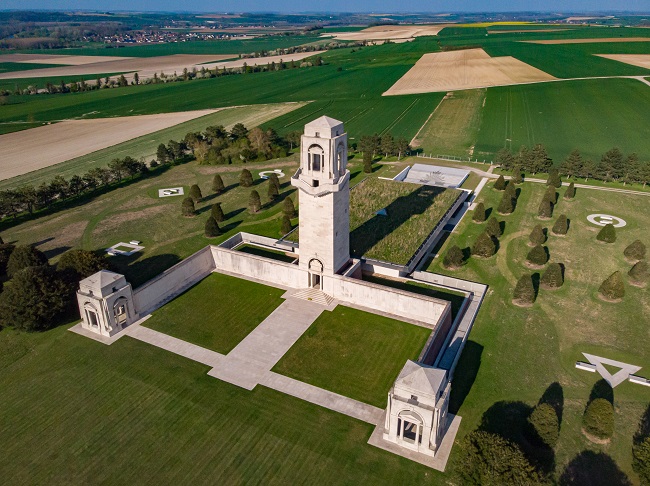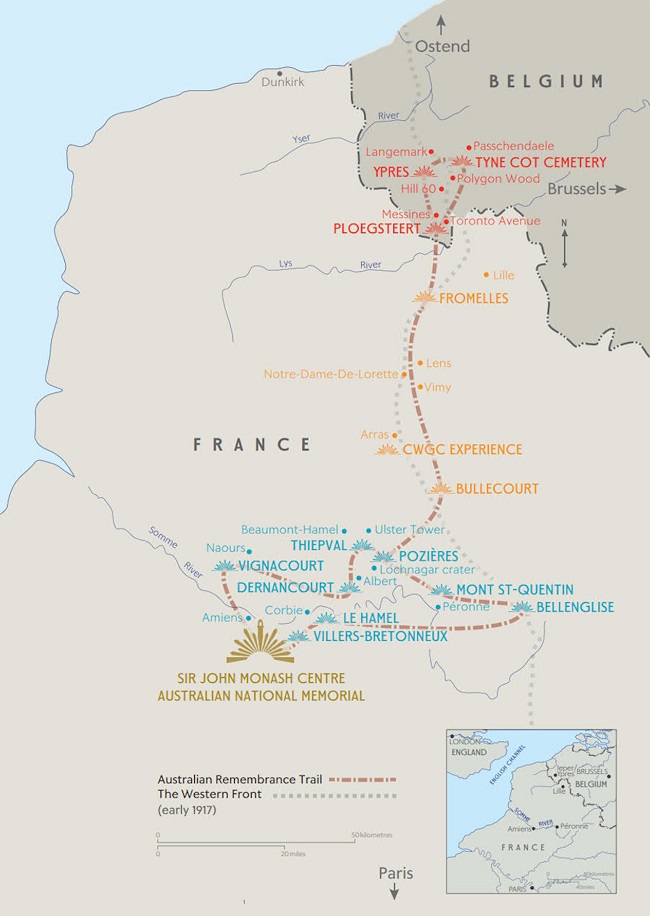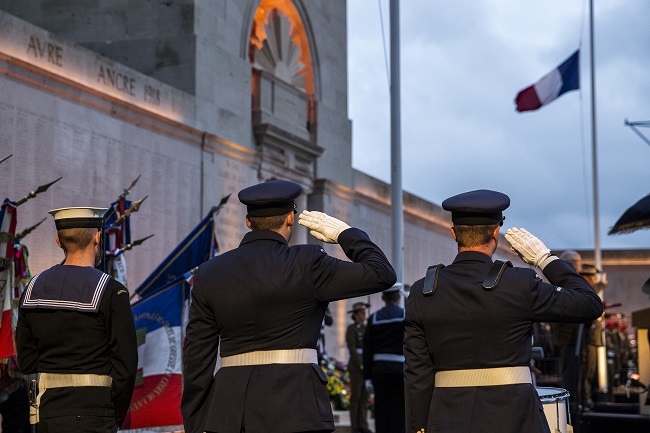Remembering Australia’s World War One Fallen in Northern France
Sponsored

Discover Australia’s significant role in World War One through the Australian Remembrance Trail spanning the north of France through to Belgium.
The Australian Remembrance Trail links the most significant sites along the 200km trail from Ieper (Ypres), on the Channel coast in Belgium, to Bellenglise in northern France. It includes battlefields, cemeteries, memorials and museums – all sharing their own experiences of the First World War.
Visiting these sites, where 75% of Australia’s First World War fallen now rest, is an emotional and humbling experience.
Australia’s commitment on the Western Front between 1916 and 1918 was one of the most important events in the country’s history. Following Federation in 1901, this was Australia’s first major role in world events and it made a substantial contribution to the outcome of the war. The experience on the Western Front had a significant effect on the nation’s approach to war and its politics and culture.
It also directly impacted the lives of countless Australian families. Of the 295,000 Australians who served on the Western Front, over 46,000 died and more than 130,000 were wounded. Many bodies were never recovered but their names are not forgotten; they are recorded on the memorials to the missing at Villers-Bretonneux, VC Corner in Fromelles and the Menin Gate in Ieper (Ypres).

The Australian Remembrance Trail
At the hub of the Australian Remembrance Trail is the Sir John Monash Centre, named after the commander who led the Australian Corps serving on the Western Front in 1918. Located near Villers-Bretonneux, 120km north of Paris, it is designed to tell the story of the more than 295,000 Australians on the Western Front battlefields of the First World War, using immersive story-telling technology in a modern exhibition.
The Sir John Monash Centre is located behind the Australian National Memorial, which commemorates almost 11,000 Australian soldiers who died during the war but have no known grave. As visitors walk up the Villers-Bretonneux Military Cemetery towards the Australian National Memorial and the Sir John Monash Centre, they will see the graves of 2146 Commonwealth soldiers, over 700 of whom are Australian.

Enjoy an immersive experience at the exhibition centre © Sir John Monash Centre
Anzac Day Service
Each year on 25 April, an Anzac Day Dawn Service is held at the Australian National Memorial in remembrance of the servicemen and women who served not only during the First World War but who have served in all wars, conflicts and peacekeeping operations.
Anzac Day marks the date of the Gallipoli Landings, the first campaign for the Australian and New Zealand Army Corps (ANZAC) during the First World War in 1915, which aimed to knock the Ottoman Empire out of the war. The campaign lasted eight months and resulted in tens of thousands of casualties, including 25,000 Australians.
In northern France, the date has dual significance as in April in 1918, Australian units helped defend Villers-Bretonneux during the German Spring Offensive. At dawn on 24 April the Germans attacked and captured the town. Leading the British counterattack, Australian units encircled the town and successfully cleared it of Germans on 25 April, coinciding with the third anniversary of the Anzac landings at Gallipoli.

At The Australian National Memorial at Villers-Bretonneux War Cemetery in France on Anzac Day 2018 © Sir John Monash Centre
For more information about the Anzac Day Dawn Service at Villers-Bretonneux please visit: https://commemorations.teg.com.au/villers-bretonneux/
For opening hours and ticket booking information, visit sjmc.gov.au
Lead photo credit : The Sir John Monash Centre and its Memorial © Simon Patching
Share to: Facebook Twitter LinkedIn Email
More in Australian Remembrance Trail, first world war, remembrance, Remembrance memorials, World War One
Leave a reply
Your email address will not be published. Required fields are marked *



